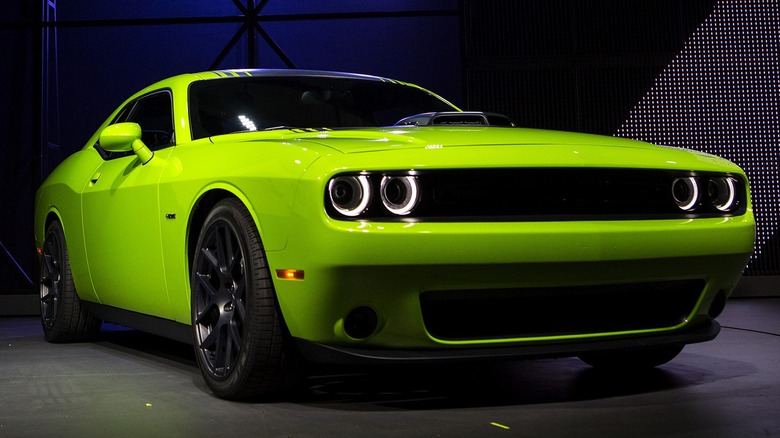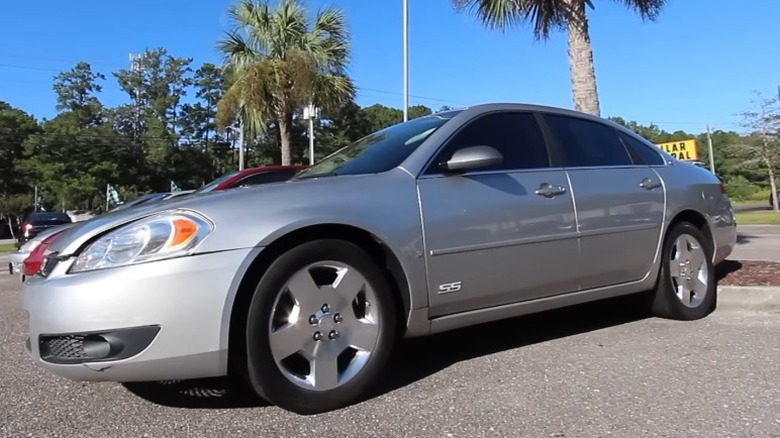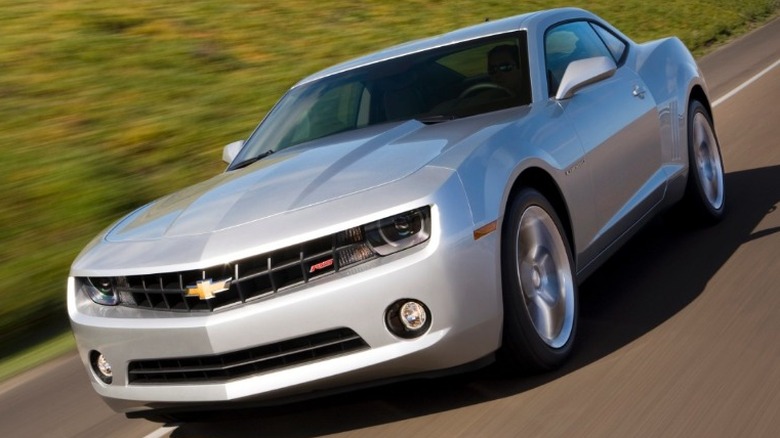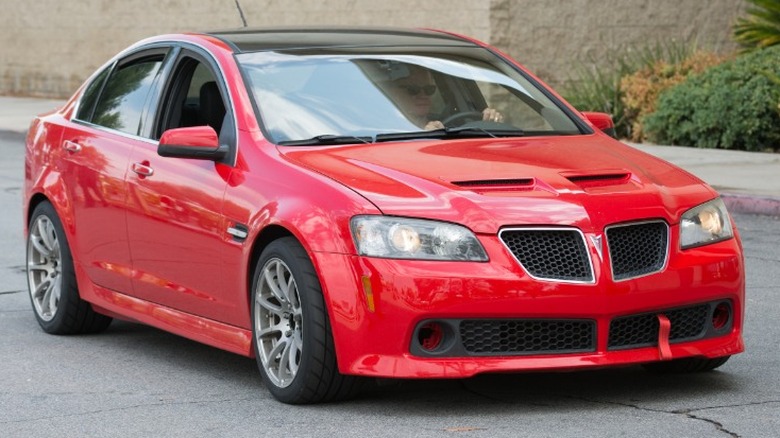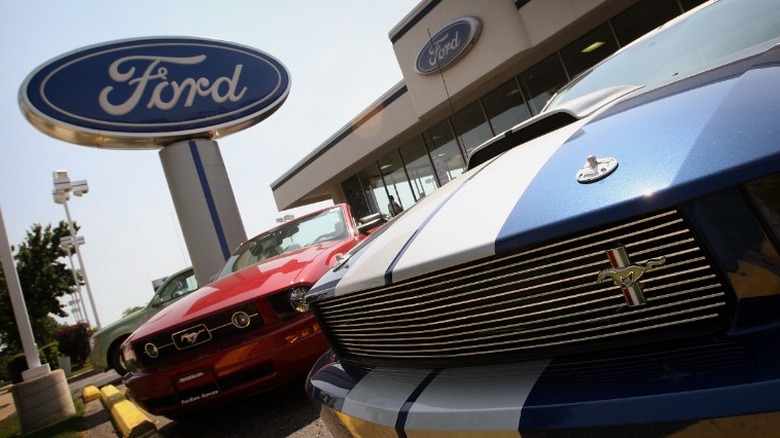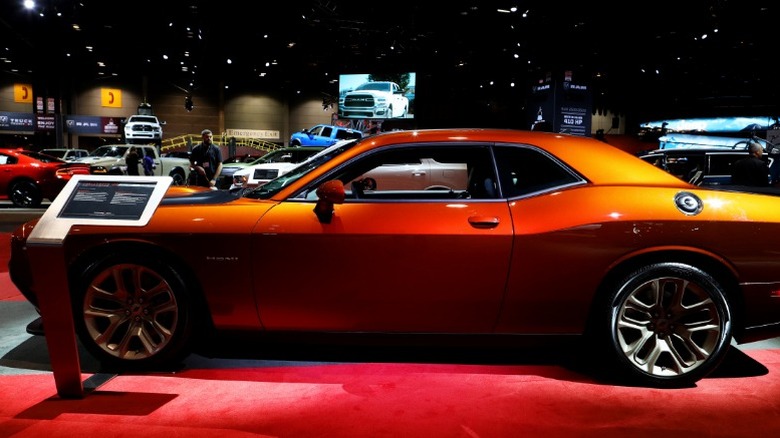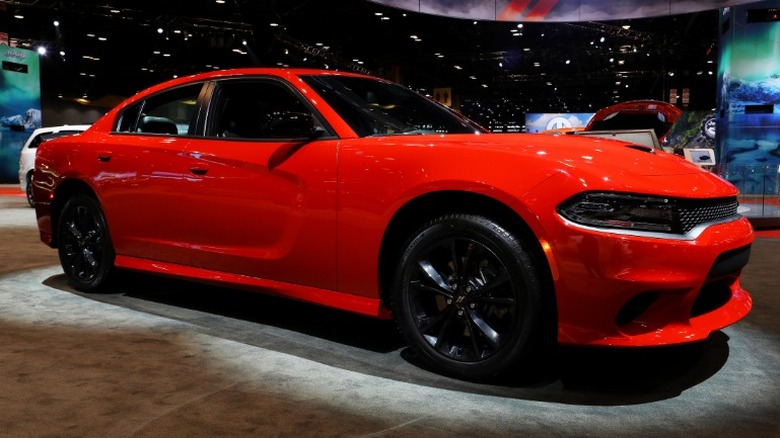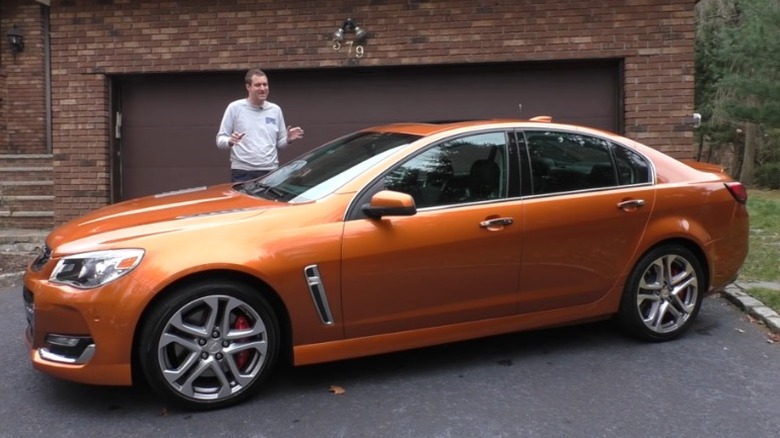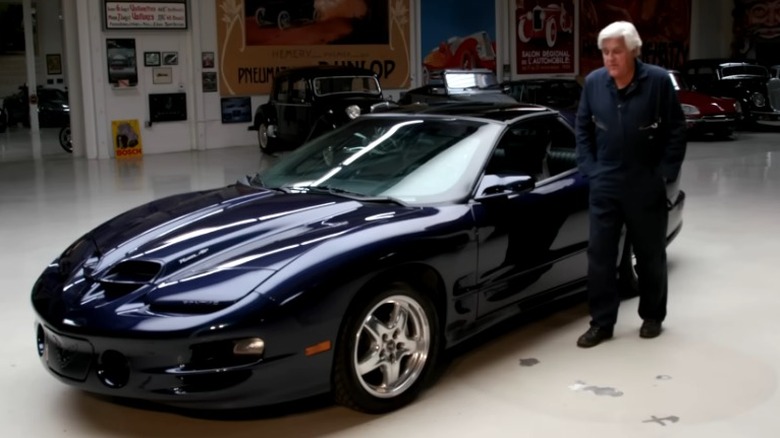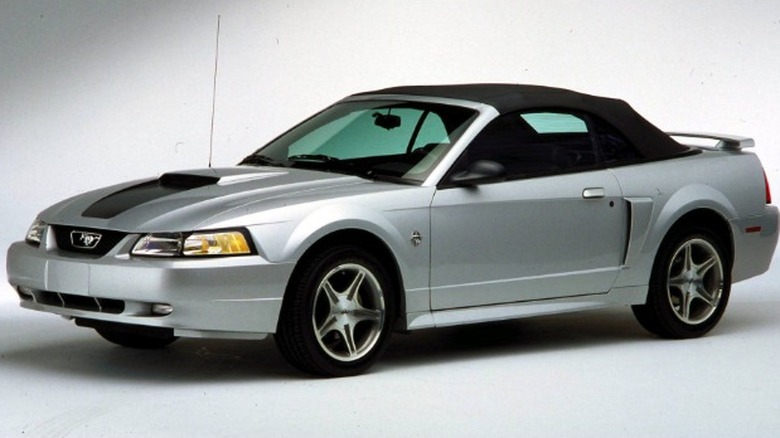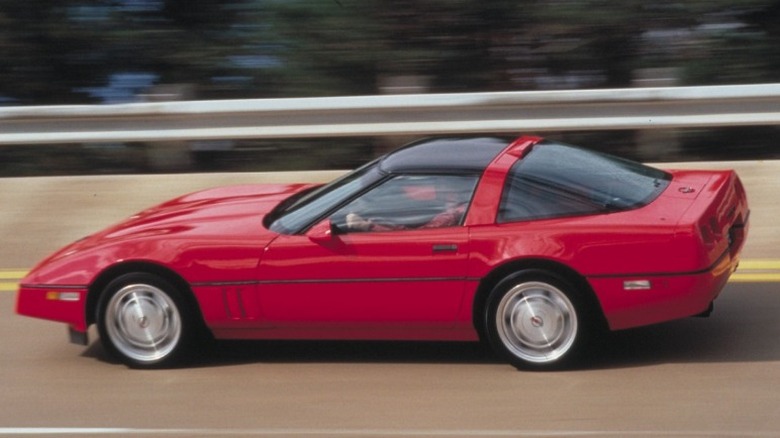10 American Muscle Cars With The Most Reliable Engines, Ranked
The reliability of American cars has, at times, been questionable. The pendulum has swung a bit both ways as the industry went through upheavals and changes in technology arrived. Yet, through it all, the mighty American V8 has been a mainstay and a stalwart of dependability. The Chevy Small-Block, Dodge HEMI, and Ford Windsor are all examples of classic engines known for longevity and relatively trouble-free running. Some of this can likely be attributed to simplicity in design and the sheer volume of engines built through the decades. While the days of large engines are waning, the V8 remains a bedrock of the American auto industry.
Although its days are numbered, the V8 is still around. It will likely power trucks for years to come, but otherwise is mostly only found in sports cars with high-performance engines. A good V8 is still the easiest way to deliver significant power while keeping complexity low. Merriam-Webster dictionary defines a muscle car as "any of a group of American-made 2-door sports coupes with powerful engines designed for high-performance driving." Fortunately for us, that applies to innumerable cars from Detroit over the last half-century, most of which remain highly desirable today.
However, technology has changed a lot over the last five decades and reliability figures for older cars are not compiled as thoroughly as later models. So, taking a sampling from the last 30 or so years, here is a ranking of the 10 American muscle cars with the most reliable engines.
2006 Chevrolet Impala SS
Chevrolet has made several iterations of the Impala SS. The first one arrived in 1959 as a sleek two-door convertible powered by a Chevy Small-Block V8. It changed with the times, often going on hiatus and then returning as a shot in the arm to Chevrolet's more traditional lineups. By the time of the last Impala SS model, it had become a performance version of a generally boring midsize family sedan. Chevrolet had produced an FWD supercharged V6 model from 2004 to 2005 but reintroduced it with a proper LS engine in 2006, running for three years until 2009.
The last Impala SS is among the few FWD cars with a powerful V8 engine. The Impala platform was designed for a V6, so the eight-cylinder engine is sandwiched between the wheels, but its 303 horsepower provides plenty of punch. The engine is an LS4, which is a 5.3-liter all-aluminum unit meant for a selection of high-performance FWD GM models. In the Impala SS, this made for an abundance of torque steer.
The LS family of engines is highly regarded for reliability and durability. Chevy trucks are known to last for hundreds of thousands of miles on the original engine, and this should be no different. That said, user reviews posted on Edmunds featured complaints about this car, including issues with air conditioning, suspension, and transmission — yet almost none of them listed actual engine problems.
2013 Chevrolet Camaro
The fifth generation Camaro was eagerly anticipated at the time of its arrival, heralding an end to the Camaro hiatus which began in 2003. With the wildly successful retro-inspired iterations of the Dodge Challenger and Ford Mustang before it, Chevrolet was sure to have a hit with its new model, the styling of which harkened back to the 1969 model. However, this Camaro would feature thoroughly modern engineering and conveniences, including manufacturing techniques and tolerances that would make it exponentially more reliable and durable, although also more complex.
This car lasted until 2015 before a major refresh, and its engine options made for some interesting models. In 2010, the base model V6 engine produced as much or more than the high-performance versions of the 1969 model, and the higher trim levels created exponentially more power than their big block predecessors. The ultra-high-performing ZL1 features a 6.2-liter V8 making 580 tire-shredding horsepower.
For the 2013 model year, J.D. Power gives the Camaro a reliability rating of 83/100, which is excellent and suggests relatively trouble-free ownership, while U.S. News rankings put it within the highest ranking available in its class. For the most part, trouble spots on this year's Camaro will arise within the interior or accessory systems, but the engine itself should yield continued enjoyment for many miles as long as it is well-maintained. That the car will look good while doing it is just a bonus.
2008 Pontiac G8
Before Pontiac was so unceremoniously laid upon the chopping block, the brand rolled out numerous excellent cars. Cherished classics such as the GTO, LeMans, and Trans Am all have places in Pontiac stardom for being attractive cars with great power and good driving experiences. Before Pontiac was shuttered, it sent a few nice models into the public domain, including its powerful G8 performance sedan.
The G8 only lasted two short years and was adopted from the long-running Australian Holden Commodore. Still, before it left the factory in Elizabeth, it received an LS3 V8, making it a serious family car. It was available with a base V6 engine, but most opted for the eight-cylinder. Power in the GT is 361 horsepower, but in its second year, Pontiac offered a GXP model with 415 horsepower and a six-speed manual. This is clearly the most desirable model, and G8 fan clubs still exist all over the country.
No matter where it is from or for how long it sold, the G8 should prove to be a trusted automotive partner, even after more than a decade since its manufacture. The cars themselves are not completely free of issues, with owners experiencing failures with the HVAC belt pulleys, some electronics issues, and issues with the drive belts. However, the LS3 at the heart of a G8 should still be running strong today.
2008 Ford Mustang GT
When Ford introduced its retro-inspired pony car for the 2005 model year, it had a winning combination on its hands. Stunning good looks with just the right amount of nostalgia built in combined with the proven Modular family of engines made for a successful Mustang. In the GT, a 4.6-liter single-overhead-cam engine provided a generous 300 horsepower with a healthy torque rating of 320 ft-lb.
The Modular engine had proven itself for years as the powerplant moving taxicabs and police cars tens of thousands of miles across the country since the early '90s. For the new Mustang, Ford added a valve to each cylinder to push the total power up a bit -– it was also used in heavy-duty applications such as the Explorer and F-150. The revised engine was not only good enough to power the newest GT pony car from Ford, but it also landed on Ward's 10 Best Engines list for 2008. Furthermore, Consumer Reports saw few problems and rates it highly.
Anyone looking for a slightly older Mustang will want to find the 2008 model specifically. Fortunately for them, with so many produced, there will be plenty to choose from. Thanks to the shrewd engineering from Ford, it will still be running strong.
2020 Dodge Challenger
When Chrysler revived the Charger moniker in the 2000s, it brought with it another legendary automotive name – Challenger. As an affordable performance coupe, the Challenger brought back the hallowed 1970s name as well as its style. With a retro design following the original more closely than any of its competitors, the new Challenger was an attractive car that delivered real performance, including the SRT8 model with a workhorse 6.1-liter HEMI making a monstrous 425 horsepower.
The new Challenger was well received by the public and automotive press alike, and it sold well. However, much like its Charger stablemate, reliability issues popped up, resulting in a similar U.S. News reliability rating of an abysmal 2 out of 100. Regardless of its beginnings, the Challenger is still in production but is getting a bit long in the tooth. However, Stellantis is installing the same engine in this car as the Charger, which improved its rating from 2 to 87.
Buying a 2020 Charger with a V8 looks to be a sound decision, especially regarding reliability. Models a couple of years newer and older are likely similarly reliable. Still, it is interesting that the stupendously powerful and extreme 2018 Challenger Demon, with its supercharged 808-horsepower HEMI V8, only scores a 4.5 out of 100 for reliability. So, maybe be ready to get acquainted with a mechanic if you choose that beast. Either way, you should buy one soon as Dodge will stop producing them after 2023.
2020 Dodge Charger
The rejuvenation of the HEMI in the last two decades has been a genuine coup for Chrysler. Standing on the legend built in the '50s and '60s of the race-winning powerhouses under the hoods of Super Bees and Chargers, Chrysler brought back a legend with a modern interpretation that endures to this day. While the new HEMI engines would be used in several cars and trucks, the new Chargers were a particular showcase for the potential of the latest designs. This proved to be a successful and popular combination, resulting in the modern Charger remaining in production to this day.
Although CarComplaints lists many instances of owners requiring full engine replacement in 2006 models, Chrysler has since stepped up its game and improved the long-term prospects of owning one of these potent family cars by a large margin. For example, U.S. News & World Report lists the reliability rating of a 2007 Charger at 2 out of 100, while the 2020 score is 89 out of 100, an impressive gain. Furthermore, J.D. Power rates it number two among large cars for the model year, trailing only the Nissan Maxima.
While the ownership of the Pentastar has changed a few times over the last two decades, somebody appears to be doing something right. As such, the recent Charger V8 is not only a potent street vehicle — it will be easy to own as well.
2017 Chevrolet SS
Within Chevrolet history, the SS, or Super Sport, has a long history of being applied to special high-performance versions of many models. The first of these came in 1961 with the Impala SS, featuring a large and powerful 409 cubic inch V8. It has since graced many special vehicles, from Camaros to Novas, eventually becoming a stand-alone model in 2013.
The car that would be the SS began life as a Holden Commodore in Australia. It was first imported to the U.S. as the Caprice PPV for sale to police departments only. A couple of years later, the general public would have access to this relatively spacious sports saloon packing 415 horsepower from its 6.2-liter LS3 V8. Although it comes from Down Under, it shares the Zeta platform with the Camaro, which offers independent suspension and generally above-average handling. The interior is also of good quality, and styling options are in line with contemporary Chevrolet models.
Ultimately, the SS was a great high-performance sedan with low-performance sales figures. It only lasted through 2017 and died along with Australian auto manufacturing. However, the failure was not a result of any failure of the car nor its potent LS3 V8. On the contrary, the SS proved to be a solidly-built car with generally good reviews. Among user reviews on Edmunds are several comments noting the SS is a good alternative to a BMW M5 that spends more time on the road and hardly any in the shop.
2002 Pontiac Firebird Trans Am WS6
The last of the thunderchickens went out on a high note when the last generation of Firebird ran from 1998 to 2002. Since 1978, Pontiac has offered the WS6 performance package, and in this last year, that gave you a 5.7-liter LS1 engine making 325 horsepower. This was the first of the LS engine, and it incorporated much of the fundamentals that made the venerable Chevy Small-Block great — enhanced by modern developments in engine technology.
With the robust nature of the Small-Block engine internals matched to modern manufacturing and electronic engine management, the LS1 is about as reliable and long-lasting as any V8 can get. It is still relatively simple in its engineering, yet complex plans went into making it just right. The styling of the WS6 Firebird, complete with its Ram Air intake on the hood, makes it a highly desirable model to own today, and user reviews on Edmunds for the 2002 model year are almost unanimously positive. Few complaints about any problems can be found and not one about the engine exists.
Prices are rising for these cars, but if you can afford one then it is certainly worth buying.
1999 Ford Mustang
The fourth iteration of the Ford Mustang debuted in 1994 and received a major refresh just a few years later. By this point, the evolution of the pony car had resulted in an attractive and sporty package that offered increasingly sophisticated technology that pushed the performance and reliability of the vehicles to new heights. Engine offerings began with the base V6 engine and the obligatory V8 for the GT performance model. In 1999, that meant the robust and travel-tested Modular OHC V8 engine could be found under the hood of millions of Mustangs for the 1999 model year, with a twin-cam 320-horsepower version in the high output Cobra SVT, which also offers the first independent rear suspension in a Mustang, ensuring that it will hug the corners while blasting through the curves.
Comprehensive reliability ratings from official sources can be a bit sparse for cars more than 20 years old, but an abundance of user reviews can paint a mostly reliable picture. For example, the overall rating for the 1999 Ford Mustang at Cars is an excellent 4.6 out of 5, with reliability coming in at an impressive 4.8. Edmunds also lists an overall score of 4.6 out of 5. However, perusing the comments reveal many similar statements proclaiming the longevity of its trouble-free engine and robust platform, with many proudly displaying their love for this vehicle.
As a 1999 model, it is far from new, but also not yet what many consider to be antique or classic, which helps it remain a very affordable vintage ride.
1990 Chevrolet Corvette ZR-1
With all of the technological advances over the last few decades, it is surprising to find that perhaps the most reliable engine in an American muscle car has its roots in the '80s. It turned out to be a genuine American supercar.
The origin of the Chevrolet Corvette ZR-1 came when engineers at Chevrolet, seeking to boost power for a new engine and exploring several options, ended up at Lotus looking over the design of its new DOHC V8 engine. Attempting to graft those heads onto an existing 350 block proved unworkable, so a whole new engine was created. The manufacturing of the engine was outsourced to Mercury Marine of Stillwater, Oklahoma, and the new high-performance Vette went on sale in 1990. Initially, power was rated at 375 horsepower, but was boosted within a couple of years to 405, which put it in the territory of Italian exotics. The car was not a huge sales success, but Chevrolet managed to produce around 6,000 units in its 5-year run.
They are highly collectible today. Despite having a bespoke hand-built twin-cam engine, it has proven to be robust. Hagerty advises that a good mechanic should be sought if you own one of these, but it won't be a huge worry as there are examples of ZR-1 models with 250,000 miles on the original engine. Anecdotal evidence from Corvette Forum suggests the engines are as reliable as any Corvette and notes that Mercury Marine engines are built to withstand extended use at high RPM, a quality that transferred to the ZR-1.
